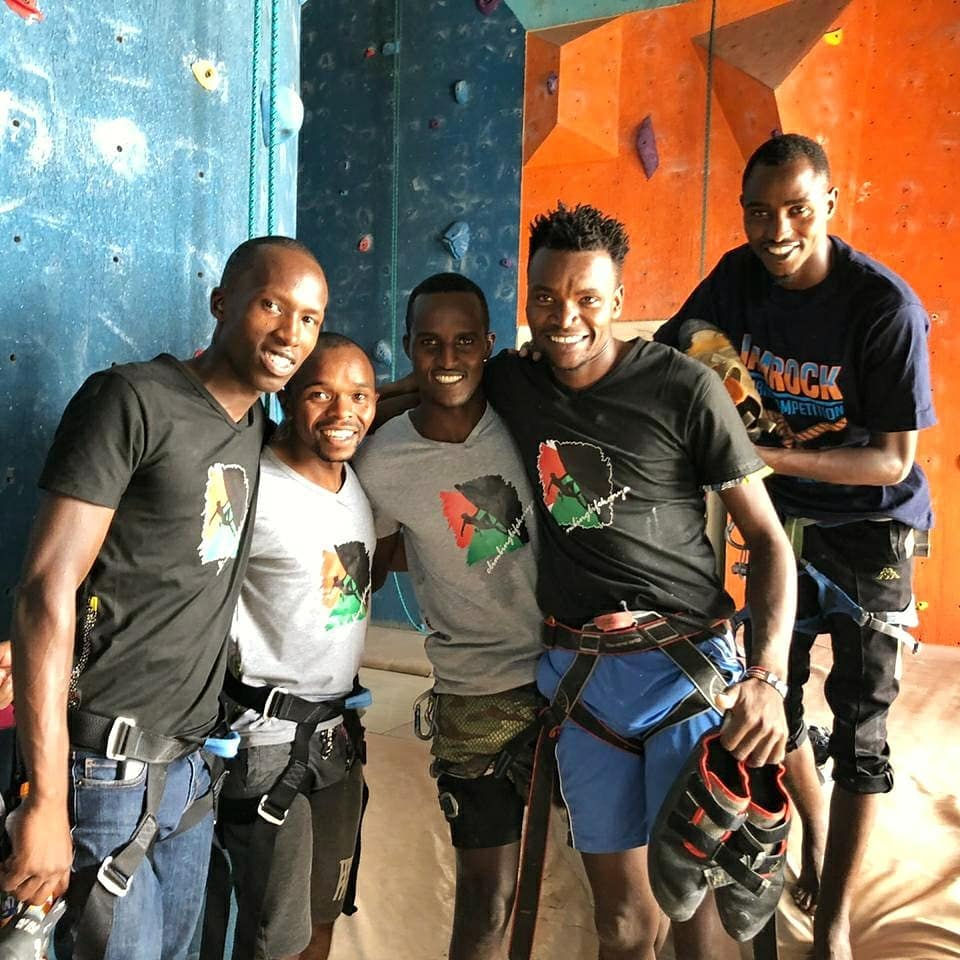Covid-19: An Opportunity For Action Towards More Inclusivity
- climbinglifekenya
- Apr 9, 2023
- 4 min read
Rock Climbing in Kenya

The COVID-19 pandemic has had a major impact on sport and physical activity. Social and physical distancing measures, closure of gyms and schools, closure of sports facilities and areas, curfews, and other measures put in place in an attempt to encourage physical distancing and curtail the spread of the disease, have significantly disrupted sport and physical activity (1,2,3), rock climbing is no exception.
Local Participation
Even before the pandemic, local participation in rock climbing activities in Kenya was inhibited by different factors with one of the key deterrents to participation being the high cost of rock climbing opportunities and equipment.
“One of the main difficulties encountered by young climbers is lack of money. Most of us have had this ourselves at one time or another. But few of us have had it as acutely as most Africans have it, because few of us – and I am speaking of expatriates – have many dependants. In such circumstances, the costs of climbing are prohibitive.” - Presidential Address, Mountain Club of Kenya 1964 (4). This still stands true in 2020. And now, local Kenyans who have taken up rock climbing are concerned they will not be able to continue with the sport due to the economic repercussions of COVID-19.
With the rise in unemployment caused by the pandemic, many individuals and families interested in rock climbing will not have the disposable income available (1) to cater for the cost of climbing sessions, membership options, hiring or purchase of gear and transport, health and accident covers, and other associated costs related to rock climbing. The costs of participation will become prohibitive and unsustainable.
The local Kenyans’ rock climbing participation will be further complicated by the fact that the majority of them are in the foundation (beginners and intermediate) levels of rock climbing. In these stages, a climber would need to climb more often to master the basics of rock climbing and partake in one-on-one instruction sessions with experienced climbers in order to build a base for long-term development in rock climbing. Social and physical distancing guidelines could greatly hinder such activities that require close proximity and interaction of persons.
The COVID-19 pandemic is a chance for all stakeholders to consider the opportunities best suited to meet the community’s unique needs and evolving lifestyles (1) and to take measures to support local participation in rock climbing activities (3).
An Opportunity For Action
In 1964, The president of the Mountain Club of Kenya asserted that conscious action was needed to ensure continuity of climbing by making a determined effort “to encourage climbing, and everything that is best that goes with climbing, among those whose home is Kenya” so that they could be part of “the driving power” of the growth of climbing (4). Decades later, Christian Fontaine, in the article Karibu Kenya Climbing, mentioned the reduced number of local climbers as one of the factors deterring the development of rock climbing in Kenya. He observed that “some hope remains in the training of Kenyan climbers, the only ones that can ultimately perceive the importance of their sport” (5) to the community. The active involvement of the local Kenyans in the rock climbing community is imperative for its growth and continuity and stakeholders should be willing to take real steps towards making this a reality.
The re-start of sporting activities post-COVID-19 offers the opportunity for organisations providing rock climbing activities to rethink and consider the most effective ways to support increased participation for all community members. Since these very organisations will also be feeling the effects of the COVID-19 pandemic on their businesses, creative thinking will be required to find ways of opening existing spaces, promoting participation by the wider community by partnering with community-based groups (1), and deliberately integrating social inclusion into all policies and actions aimed at addressing the impact of COVID-19.
As stakeholders rethink how they deliver services and conduct their business because of health issues, they should also pay attention to the socio-economic effect of the pandemic amongst the members of the local communities within which they operate. Deliberate effort should be put into creating accessible opportunities and implementing programmes targeted at encouraging sustainable, long-term and active local participation.
COVID-19 presents an immense test and it is only by working together that stakeholders can mitigate the direct and indirect impact of the crisis on participation in rock climbing for the more affected members of our community. Stakeholders need to start thinking about the new normal they want to see for the Kenyan rock climbing community when the battle against COVID-19 is over and start working towards it. If this future is to include a more inclusive and engaged rock climbing community in Kenya, then the stakeholders need to take action towards addressing the challenges that threaten the participation of locals in rock climbing; setting the stage for the continued growth of rock climbing within Kenya whilst strengthening the use of rock climbing as tool for social inclusion (3).
References
Jeanes, R., Penney, D., O'Connor, J., and Spaaij, R. (2020) Community Sport and COVID-19: An Opportunity to Make Sport More Inclusive? Accessed https://www.sportanddev.org/en/article/news/community-sport-and-covid-19-opportunity-make-sport-more-inclusive
Simon, N. (2020) Everything is Closed: The International Impact of COVID-19 on Climbing Communities. Accessed https://climbinginitiative.org/covid-impact/
United Nations Department of Economic and Social Affairs, Social Inclusion (2020) The impact of COVID-19 on Sport, Physical Activity and Well-being and its Effects on Social Development. Accessed https://www.un.org/development/desa/dspd/2020/05/covid-19-sport/
Mountain Club of Kenya Bulletin No. 58, (1964, June) page 7.
Fontaine, C. (2016) Karibu Kenya Climbing Accessed https://explore.iloveclimbing.co/story/karibu-kenya-climbing-2
_edited_edited.png)
Comentarios